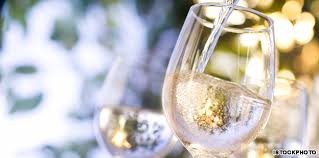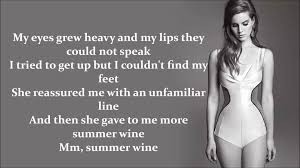Event
The Wine Club - Summer Whites!!
Tuesday, June 21, 2016
Time: 07:00pm - 08:30pm
Type: Class
Location: The Wine Cabinet
Event Free

Once a month we gather together to explore, in a very interactive way, a small slice of the fascinating world of wine.
While there is no charge for this limited seating, we hope that you will enjoy the wines sufficiently to wish to have them in your wine cabinet!
More importantly, we hope that this short experience with very good wine will make you a lifelong wine lover and a loyal patron of
The Wine Cabinet!
We begin promptly at 7:00pm.
 Summer Whites!!
Summer Whites!!
Seven Different Varietals!!
At your Request!!
Tuesday June 21, 7:00PM
We weren't going to have a June class, but the demand by last month's attendees was overwhelming, so here we are - Summer Whites!!
Crisp, Cool, Refreshing, Juicy, and Satisfying!!
Seven Varietals that will make those warm summer evenings something to savor and remember.
We'll also be serving some of Kate's creative treats for your pairing enjoyment!
Reservations are required, seating is limited, but still available. ?
?
Pinot Grigio: Pinot gris or Grauburgunder is a white wine grape variety of the species Vitis vinifera. Thought to be a mutant clone of the Pinot noir variety, it normally has a grayish-blue fruit, accounting for its name (gris meaning "gray" in French) but the grapes can have a brownish pink to black and even white appearance. The word pinot, which comes from the word meaning "pine cone" in French,[1] could have been given to it because the grapes grow in small pine cone-shaped clusters. The wines produced from this grape also vary in color from a deep golden yellow to copper and even a light shade of pink,[2] and it is one of the more popular grapes for orange wine. The clone of Pinot gris grown in Italy is known as Pinot Grigio.
Sauvignon Blanc: Sauvignon blanc is a green-skinned grape variety that originates from the Bordeaux region of France. The grape most likely gets its name from the French words sauvage ("wild") and blanc ("white") due to its early origins as an indigenous grape in South West France.[1] It is possibly a descendant of Savagnin.Sauvignon blanc is planted in many of the world's wine regions, producing a crisp, dry, and refreshing white varietal wine. The grape is also a component of the famous dessert wines from Sauternes and Barsac. Sauvignon blanc is widely cultivated in France, Chile, Canada, Australia, New Zealand, South Africa,Washington and California. Some New World Sauvignon blancs, particularly from California, may also be called "Fume Blanc".
 Vermentino: Vermentino is a light-skinned wine grape variety, primarily found in Italian wine. It is widely planted in Sardinia, in Liguria primarily under the name Pigato, to some extent in Corsica, in Piedmont under the name Favorita, and in increasing amounts in Languedoc-Roussillon.[1] The leaves are dark green and pentagonal. The grapes are amber-yellow and hang in pyramidal bunches. The vines are often grown on slopes facing the sea where they can benefit from the additional reflected light. The Vitis International Variety Catalogue now gives Italy as its origin.[2]
Vermentino: Vermentino is a light-skinned wine grape variety, primarily found in Italian wine. It is widely planted in Sardinia, in Liguria primarily under the name Pigato, to some extent in Corsica, in Piedmont under the name Favorita, and in increasing amounts in Languedoc-Roussillon.[1] The leaves are dark green and pentagonal. The grapes are amber-yellow and hang in pyramidal bunches. The vines are often grown on slopes facing the sea where they can benefit from the additional reflected light. The Vitis International Variety Catalogue now gives Italy as its origin.[2]
Pinot Blanc: Pinot blanc is a white wine grape. It is a point genetic mutation of Pinot noir. Pinot noir is genetically unstable and will occasionally experience a point mutation in which a vine bears all black fruit except for one cane which produces white fruit.
In Alsace, Germany, Luxembourg, Italy, Hungary, Czech Republic and Slovakia, the wine produced from this grape is a full-bodied white. In 2000, there were 1,300 hectares (3,200 acres) of Pinot blanc in France,[1] with most of the plantations found in Alsace, where it is used for both still white wines and is the most common variety used for sparkling wine, Crémant d'Alsace. Somewhat confusingly, the designation "Pinot blanc" for Alsace AOC wine does not necessarily mean that the wine is varietally pure Pinot blanc. (This is in difference to Pinot gris, which is a "true" varietal designation in Alsace.) Rather, the designation means that it is a white wine made from Pinot varieties.
Riesling: Riesling is a white grape variety which originated in the Rhine region of Germany. Riesling is an aromatic grape variety displaying flowery, almost perfumed, aromas as well as high acidity. It is used to make dry, semi-sweet, sweet, and sparkling white wines. Riesling wines are usually varietally pure and are seldomoaked. As of 2004, Riesling was estimated to be the world's 20th most grown variety at 48,700 hectares (120,000 acres) (with an increasing trend),[1] but in terms of importance for quality wines, it is usually included in the "top three" white wine varieties together with Chardonnay and Sauvignon blanc. Riesling is a variety which is highly "terroir-expressive", meaning that the character of Riesling wines is greatly influenced by the wine's place of origin.
Chardonnay:
Chardonnay (pronounced: [?a?.d?.n?]) is a green-skinned grape variety used to make white wine. It originated in the Burgundy wine region of eastern France, but is now grown wherever wine is produced, from England to New Zealand. For new and developing wine regions, growing Chardonnay is seen as a "rite of passage" and an easy entry into the international wine market.[1]
The Chardonnay grape itself is very neutral, with many of the flavors commonly associated with the grape being derived from such influences as terroir andoak.[2] It is vinified in many different styles, from the lean, crisply mineral wines of Chablis, France, to New World wines with oak, and tropical fruit flavors. In cool climates (such as Chablis and the Carneros AVA of California), Chardonnay tends to be medium to light body with noticeable acidity and flavors of green plum, apple, and pear. In warmer locations (such as the Adelaide Hills and Mornington Peninsula in Australia and Gisborne and Marlborough region of New Zealand), the flavors become more citrus, peach, and melon, while in very warm locations (such as the Central Coast AVA of California), more fig and tropical fruit notes such as banana and mango come out. Wines that have gone through malolactic fermentation tend to have softer acidity and fruit flavors with buttery mouthfeel and hazelnut notes.[3]
Gruner Veltliner:
Grüner Veltliner (Green Veltliner) is a variety of white wine grape variety grown primarily in Austria, Slovakia, and the Czech Republic. The leaves of the grape vine are five-lobed with bunches that are long but compact, and deep green grapes that ripen in mid-late October in the Northern Hemisphere.
In 2008, Grüner Veltliner plantations in Austria stood at 17,151 hectares (42,380 acres), and it accounts for 32.6% of all vineyards in the country, almost all of it being grown in the northeast of the country.[1] Some is made into sparkling wine in the far northeast around Poysdorf. Along the Danube to the west of Vienna, in Wachau, Kremstal and Kamptal, it grows with Riesling in terraces reminiscent of the Rhine, on slopes so steep they can barely retain any soil. The result is a very pure, mineral wine capable of long aging, that stands comparison with some of the great wines of the world. In recent blind tastings organized by the Austrian Wine Marketing Board, Grüner Veltliners have beaten world-class Chardonnays from the likes of Mondavi and Maison Louis Latour.[2]
Seats are still available! Bring a Friend!
Call now to hold your place
703-668-WINE(9463)
We begin a new approach to education this year. We will be focusing more sharply on the upper end wines and utilizing winemakers, winery reps and importers to speak knowledgeably about them. We will incorporate more complete food offerings to complement the wines. All of this is more expensive, but we have heard your request that we take this direction and we’re trying to respond appropriately. Please keep us informed of how you like what we’re doing. This is for you!
The classes will be charged accordingly this year (September is $25/person - $40/couple), fees will be collected when you reserve your seat and you will be required to cancel the Saturday before the class in order to receive a gift certificate for your payment.
